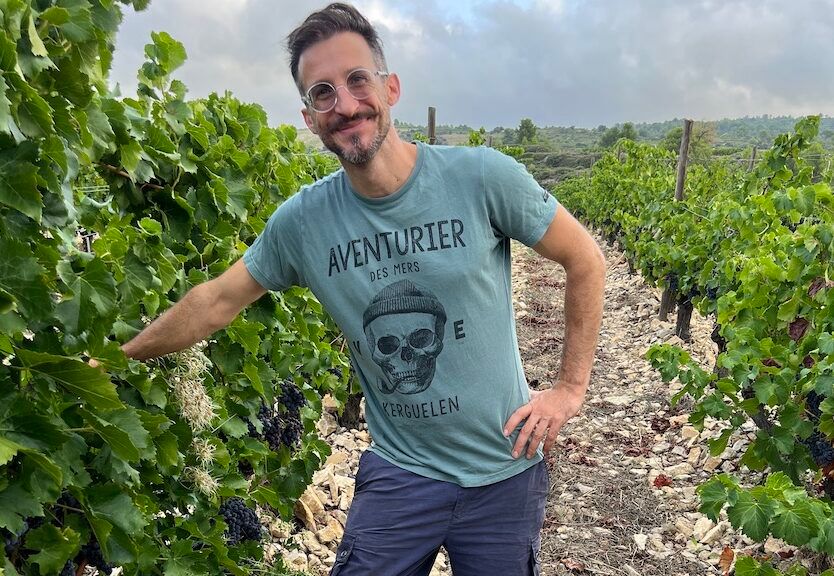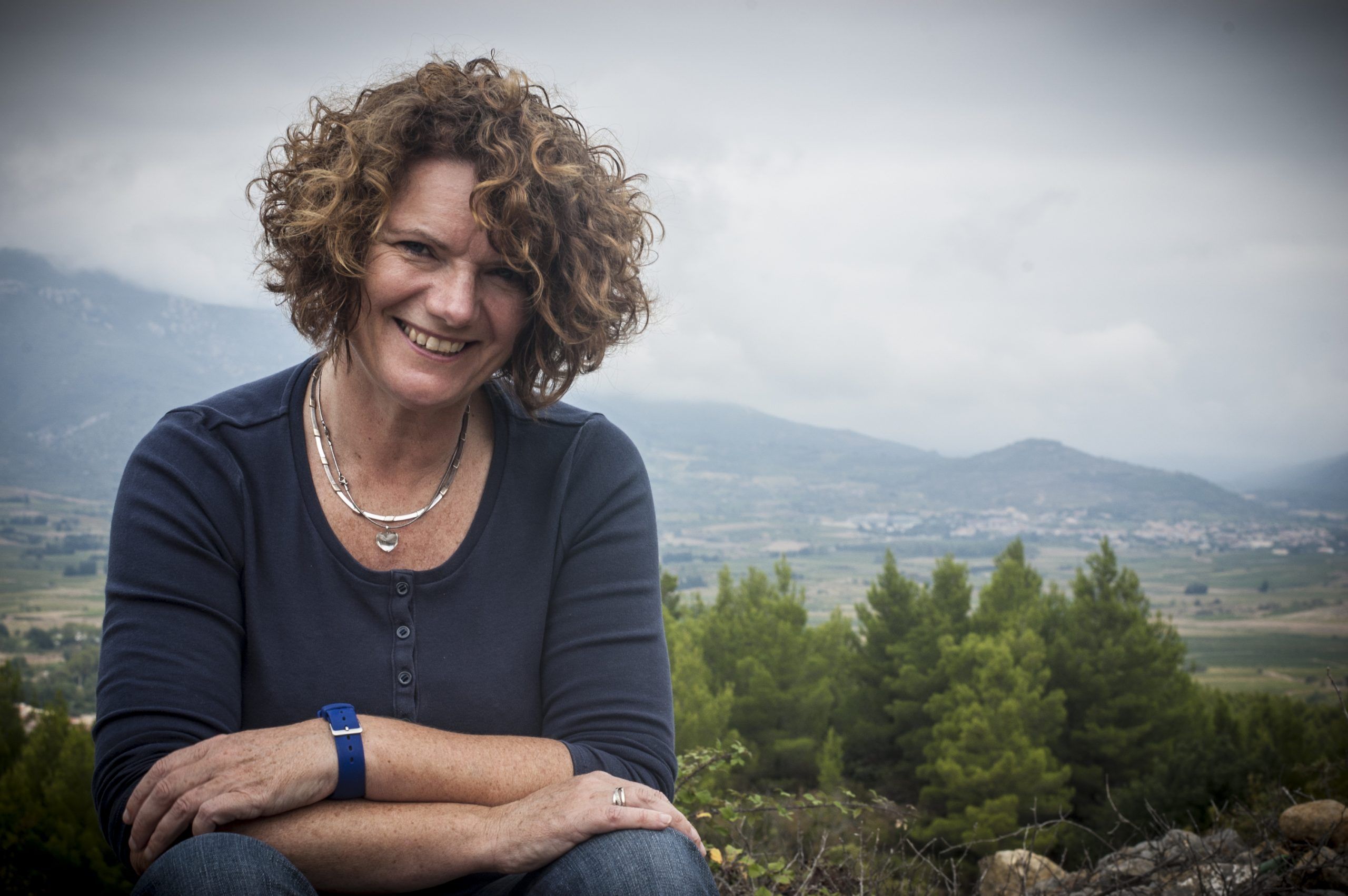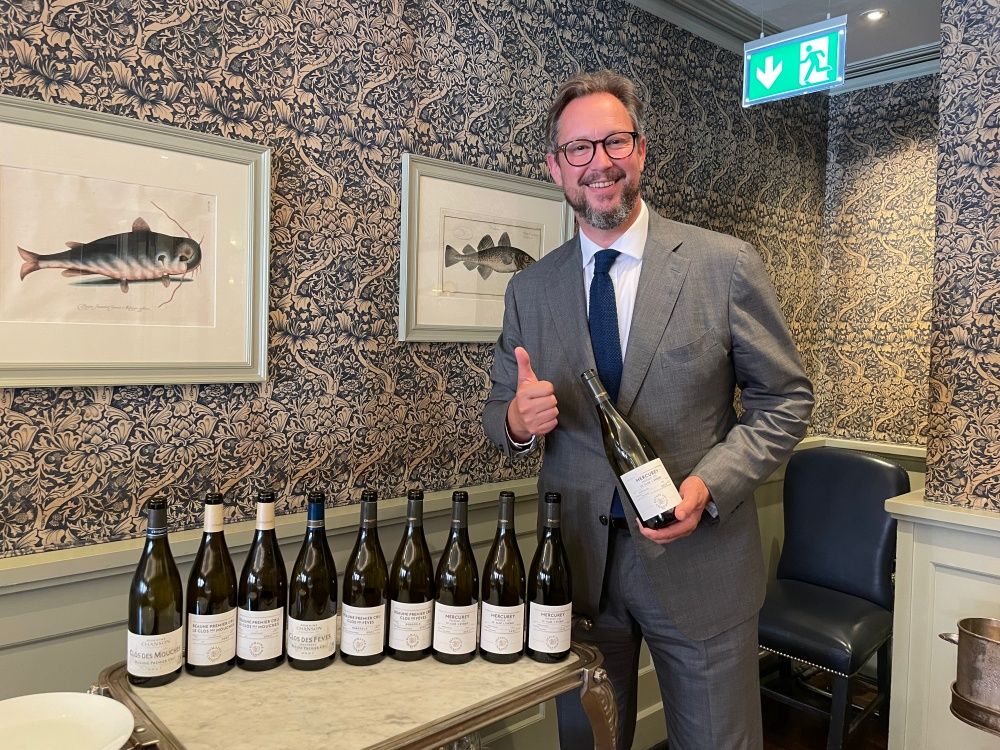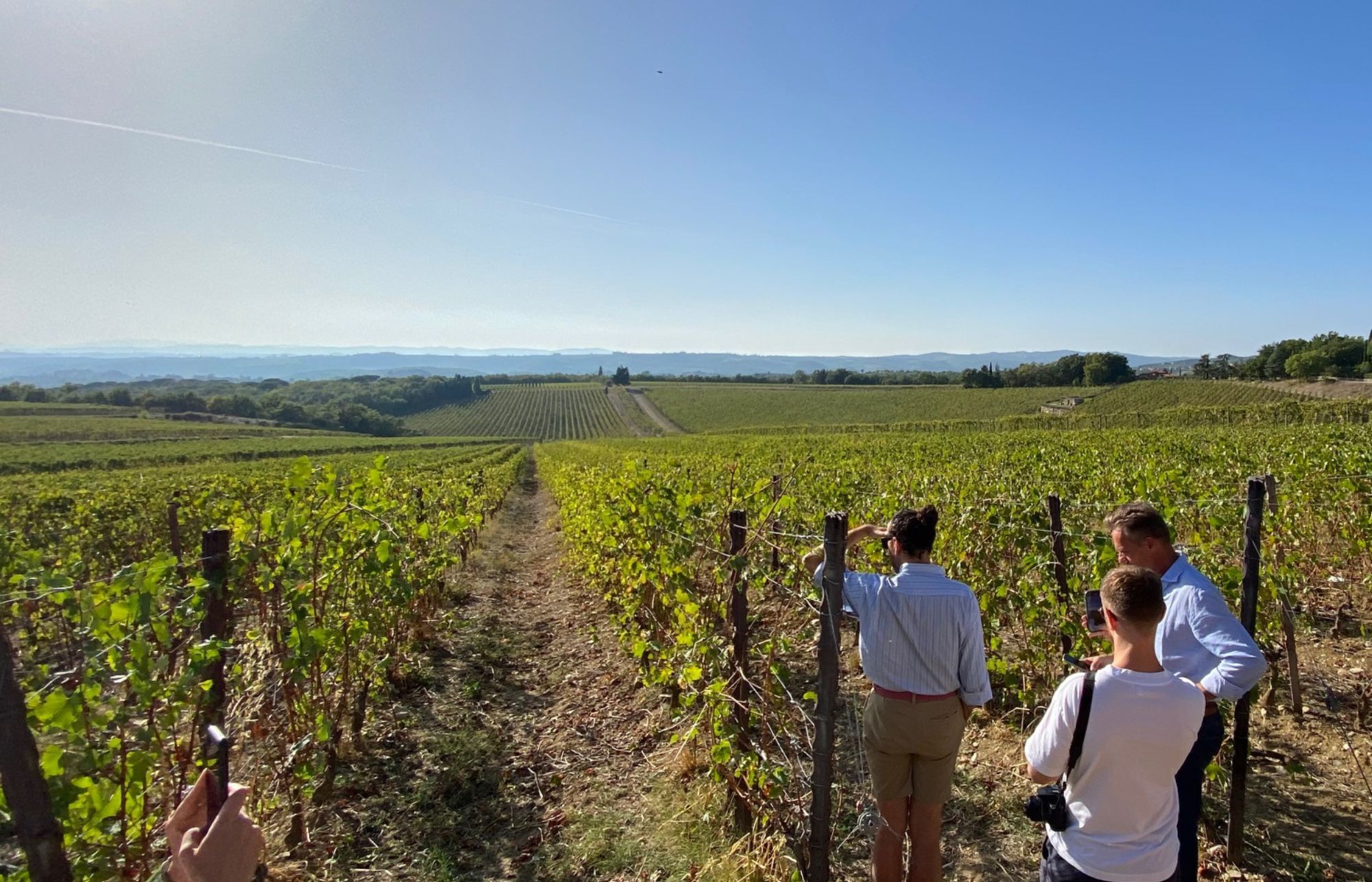“It is so important to grow grapes in a truly diverse environment,” Vincent Chansault says
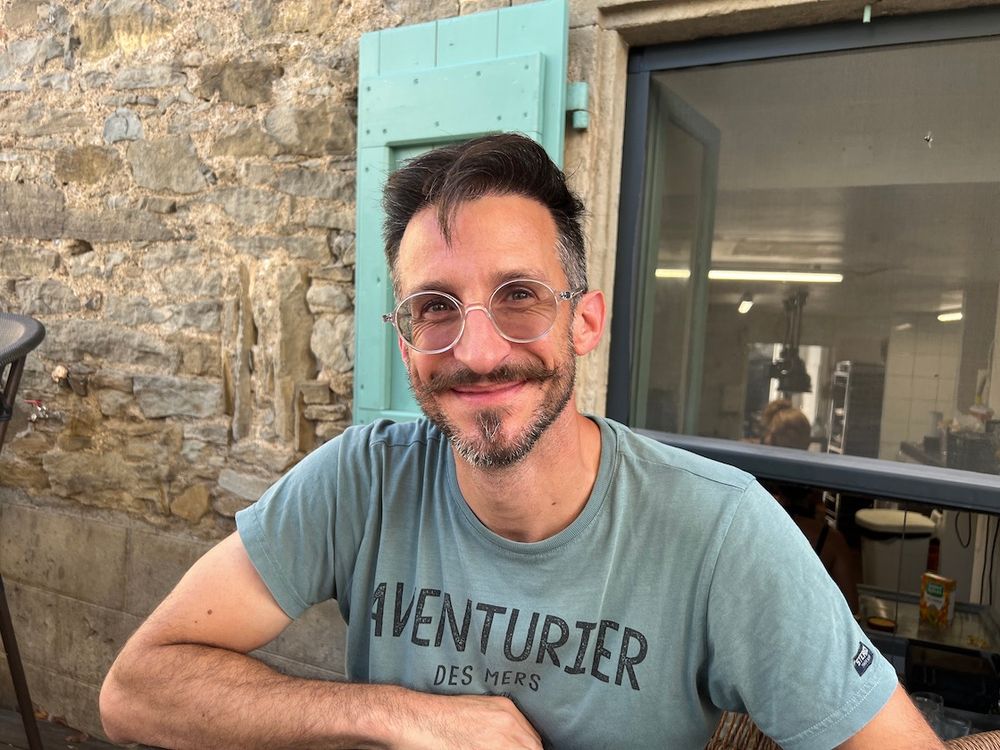
New breed: Vincent Chansault, Gayda’s technical director, and one of the South West’s most impressive young winemakers
“So do you know what this is?”
Vincent Chansault points at a small hole in the ground surrounded by an array of grain that seems to emanate from it in a wide arc, much like a miniature crop circle.
Sorry, not a clue.
“Because it rained last night,” he continues, “ants have moved all their food outside of the nest to dry. By tonight they will have put it all back together underground.”
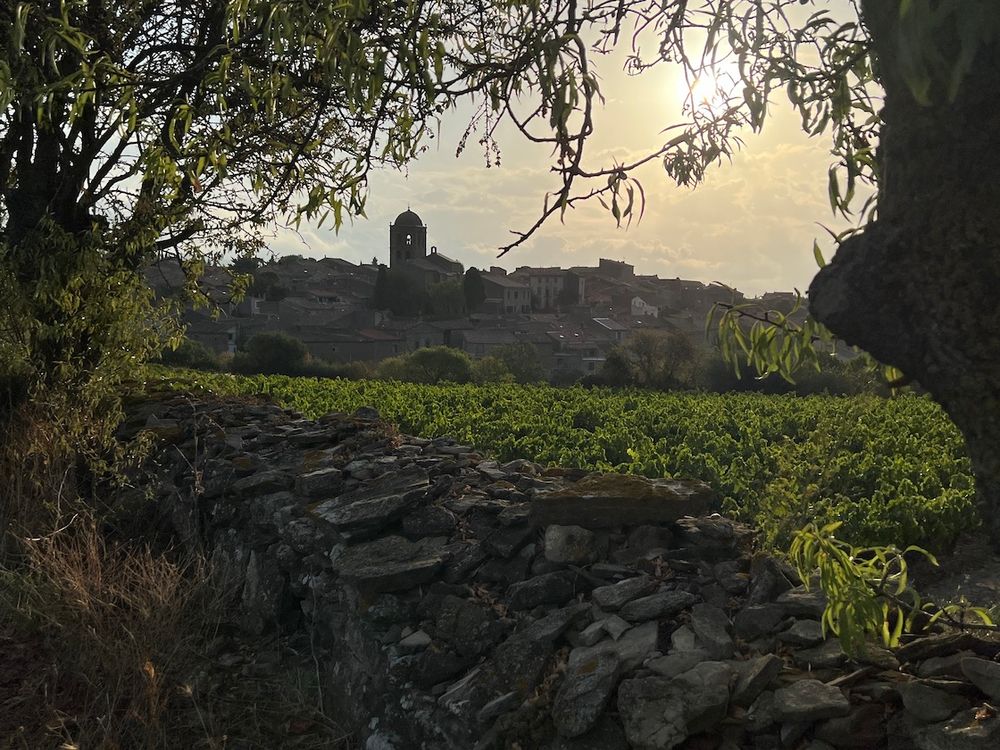
La Livinière, September 1st, 2022
We are standing in a vineyard at first light in the Minervois, the region of the Languedoc where some of its best wines are made. As the sun comes up we can see terraced plots ascend to one side of the valley, punctuated by flora and fauna of all description – figs, walnut trees, bay and, lower down, wild garlic, lavender and fennel plus a whole host of other shrubs that make up the heady aromas of the garrigue, just starting to rise up as the morning air warms. Cocks crow, dogs bark and the bells of a nearby church in the village of La Livinière disturb the still air.
For one of the fastest-rising talents in South-West France making wine is not just about growing healthy grapes in isolation, for Chansault, an early adopter of organic viticulture, just as important is how the vines work within their overall natural environment – how the different varieties react in different soils, on different aspects and altitudes, how the grapes taste on one side of the plot compared to the other. Here is a man who is endlessly fascinated by the natural world – the minutiae of how each part works with one another.
“It is so important to grow grapes in a truly diverse environment,” Chansault says, smiling as he takes in our surroundings.
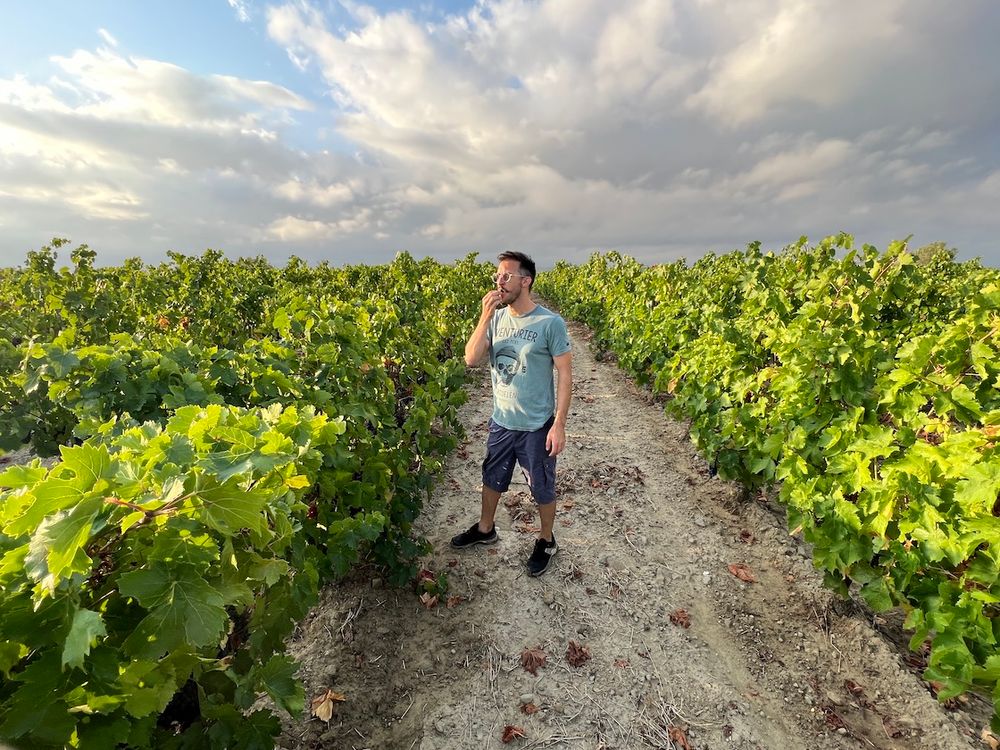
“I love the taste of Cinsault in the morning… it tastes like victory” (apologies to Robert Duvall)
On the road with Chansault
I am spending the day shadowing Chansault at the beginning of harvest in La Livinière. As technical director of Domaine Gayda he is in charge of winemaking and vineyards in the four terroirs across the Languedoc and Roussillon that Domaine Gayda operates in: Brugairolles in Malepère (where the winery is based), La Livinière in the Minervois and Col de la Dona and La Tour de France both in the Roussillon. There are 27 plots in all, a mix of fully-owned and curated – the distances between all of the vineyards not for the feint-hearted.
“I do spend a lot of time on the road at this time of year,” he smiles.
Not half. Before we meet up he has already picked Gayda’s Sauvignon Blanc starting at 4am, a harvest that is three weeks earlier than normal. And in the three weeks preceding he has had just two half days off when they weren’t harvesting.
Originally from the Loire, Chansault is a spritely 42, whose energy and enthusiasm belies his age. Before coming to Gayda he worked primarily in South Africa, working a total of 10 harvests there and spending two years working for Marc Kent whose winemaking strategy with projects like Chocolate Block is partially aped at Gayda – working with a range of growers over a patchwork of different terroirs.
Taking charge of Gayda’s 27 different cuvées from vineyards stretched right across this colossal region means that today, like many days around harvest-time, is spent charging around in the van tasting a lot of grapes from many different sites. The vagaries of the climate also mean that there is no steady and clear progression of grape-ripening from one region to another – making the logistics of Chansault’s job even more exacting.
La Livinière – the only Cru in the Languedoc – comprises five villages and a myriad of vineyard sites with different soils, aspects, altitudes and micro-climates; to the North of the village lies the Montagne Noir – the southernmost part of the Massif Central, from which this region’s top quality soil comes from.

Shades of the Northern Rhône: Combarils vineyard
In general the soil type is argiles calcaires ie. clay and limestone but even here as we visit some dozen different vineyards the difference in the style of limestone varies enormously; in one vineyard the limestone comes in large slabs with a flinty quality, in another the limestone is more rounded and textured with obvious-marine origins, in another called Combarils which Chansault calls ‘Comb-Rôti’ the ground is so covered in stones, Northern Rhône style, that you cannot see the clay.
The clay too changes from dense and moist (where the surface cover crops in the vineyard have helped retain moisture) to a more ‘couscous’ texture on the higher ground.
The day is spent moving from one plot to the other, climbing the bone-rattling dusty tracks in his 4X4 , that connect this patchwork of vineyards.
The red grape varieties here are a mix of traditional Carignan and Cinsault and Rhône ‘improver varieties’ Syrah, Grenache and Mourvèdre – some plots acquired in 2004 when Gayda was first established, some bought more recently and replanted, others owned by growers. These are all found around La Livinière. The white varieties – Viognier, Marsanne, Maccabeu, Grenache Gris, and Chenin Blanc – are found in the Roussillon, at the estate or in the ‘black mountains’ a short drive away.
At each plot we stop and walk through the vineyard, tasting grapes at regular intervals.
“I like the flavours here’” Chansault says, making a mental note to himself which day looks most likely to have the pickers here, and which ones need that little bit more time – the skins not quite ready or the pips not quite crunchy enough. Never before have I tasted so many samples of grapes in a day, and never before so varied – higher up in the vineyard the smaller berries are more intense and concentrated, lower down vice versa. Not only is the decision on what day to start harvesting a key one, but also which part of the plot to start with.
But the overall flavours of the fruit are good – the typicity of the varietals shining through – the Cinsault is fresh and juicy, and some Syrah we taste from l’Enfer (the 0.65 ha high, north-facing plot from which the Syrah is grown for Gayda’s premium cuvée Villa Mon Rêve) has ripe tannins, peppery notes with crunchy, nutty seeds – the fruit a clear step above.
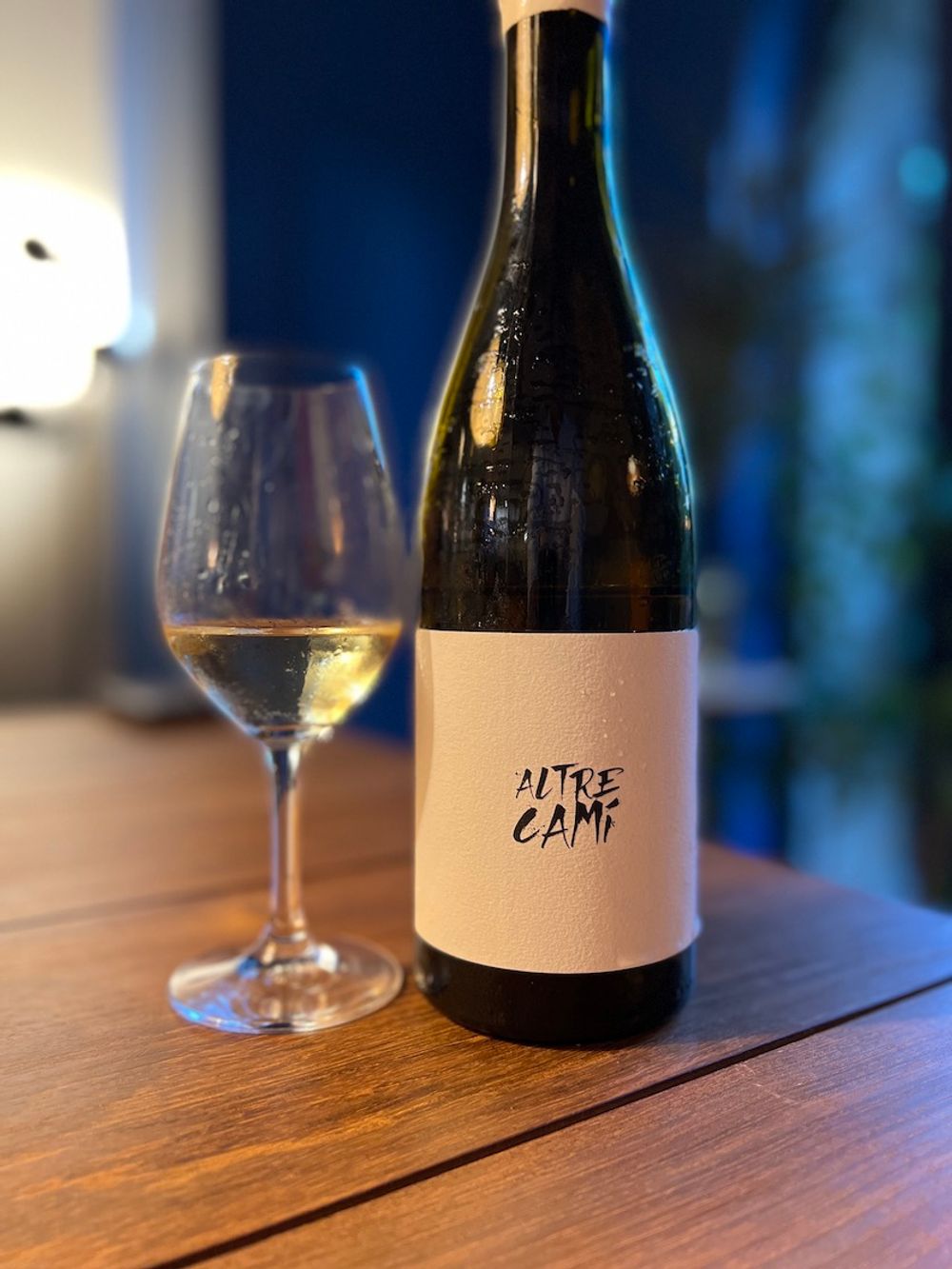
Spectacular: launched this year the Altre Cami range – a Grenache Gris and a Grenache Noir
Harvest in the Roussillon is completely over by the time I hook up with Chansault – “The vines were ‘urgh – just pick me’,” he says explaining that with such little rain the vines had stopped working and the fruit was not going anywhere. Much has been made of the difficulties with this year’s growing season in the Roussillon where unrelenting drought enforced an early harvest and an estimated 25-30% drop in yield.
Interestingly, Chansault says that the yield in the Languedoc this harvest is not that much below the norm. The superb spring and early summer promised a bumper crop which was then restricted by the prolonged hot and dry summer. But since then there has been enough rain to deliver a decent-sized crop, so recent talk of decreased yields in the Languedoc is largely down to people having to correct down what was an over-estimate in early June.
Around La Livinière where it has had two bursts of rain (both 30ml) before our visit, this has allowed the vineyards to take a breather, freshen up and the vines work just that little bit longer – an amazing amount of new leaf growth appearing in just a week.
“The rain was heaven, not for volume but for proper ripeness as it has allowed the vines to start working again.”
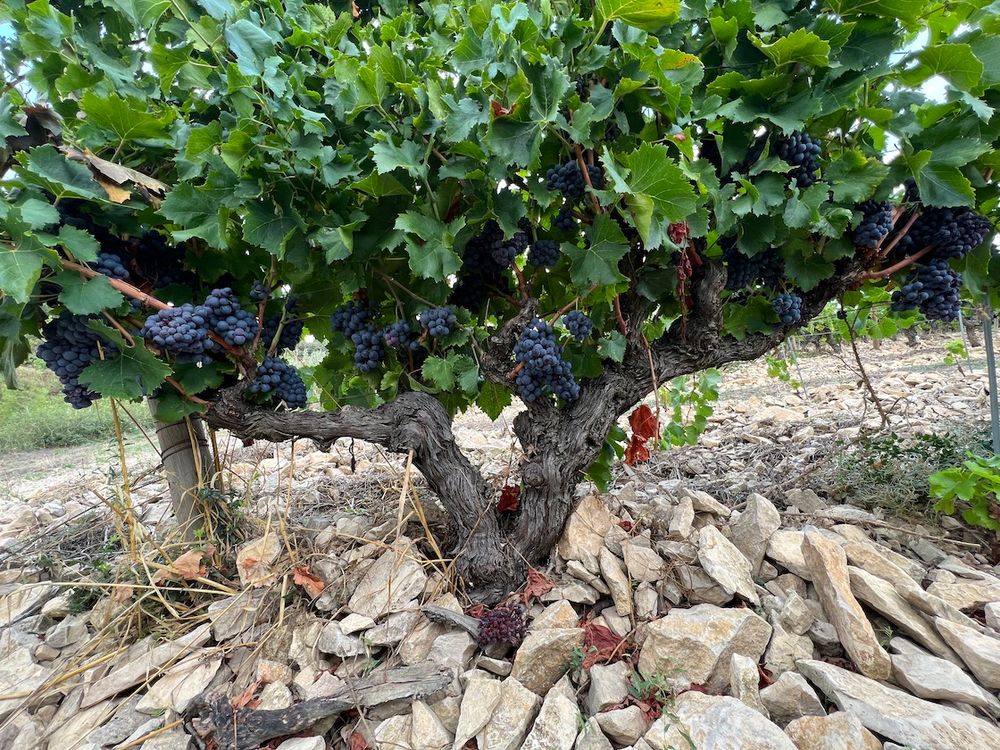
The quality of the 2022 fruit is there for all to see
For Chansault the rain has bought him some time and allowed him to pick and choose where the fruit is displaying characteristics that he is looking for. We visit plots of Cinsault, Grenache, Syrah, Mourvèdre and Carignan in the vineyards within the boundaries of the appellation, then plots of Marsanne, Viognier and Syrah that lie 10-minutes drive outside the boundaries and 150 metres higher up in the Montagne Noir, the terrain changing from dusty Mediterranean garrigue to deciduous wooded hills and the flora and fauna becoming more temperate as we climb – chestnut trees instead of cacti.
It is here that the Marsanne has been picked but the Viognier is still on the vine. The flavour is there all right in the grapes but the skins are bitter – something that happens when Viognier lacks water. When I taste a tank sample of this plot a week later at the winery the juice has everything going for it – nice flavour and structure. It’s a remarkable turnaround from fruit that didn’t look so promising on vine.
“I fermented it cooler,” Chansault explains, “at 20°C-22°C when I would normally ferment at 26°C-28°C. I also did shorter pump overs and less of them in order to get less extraction.”
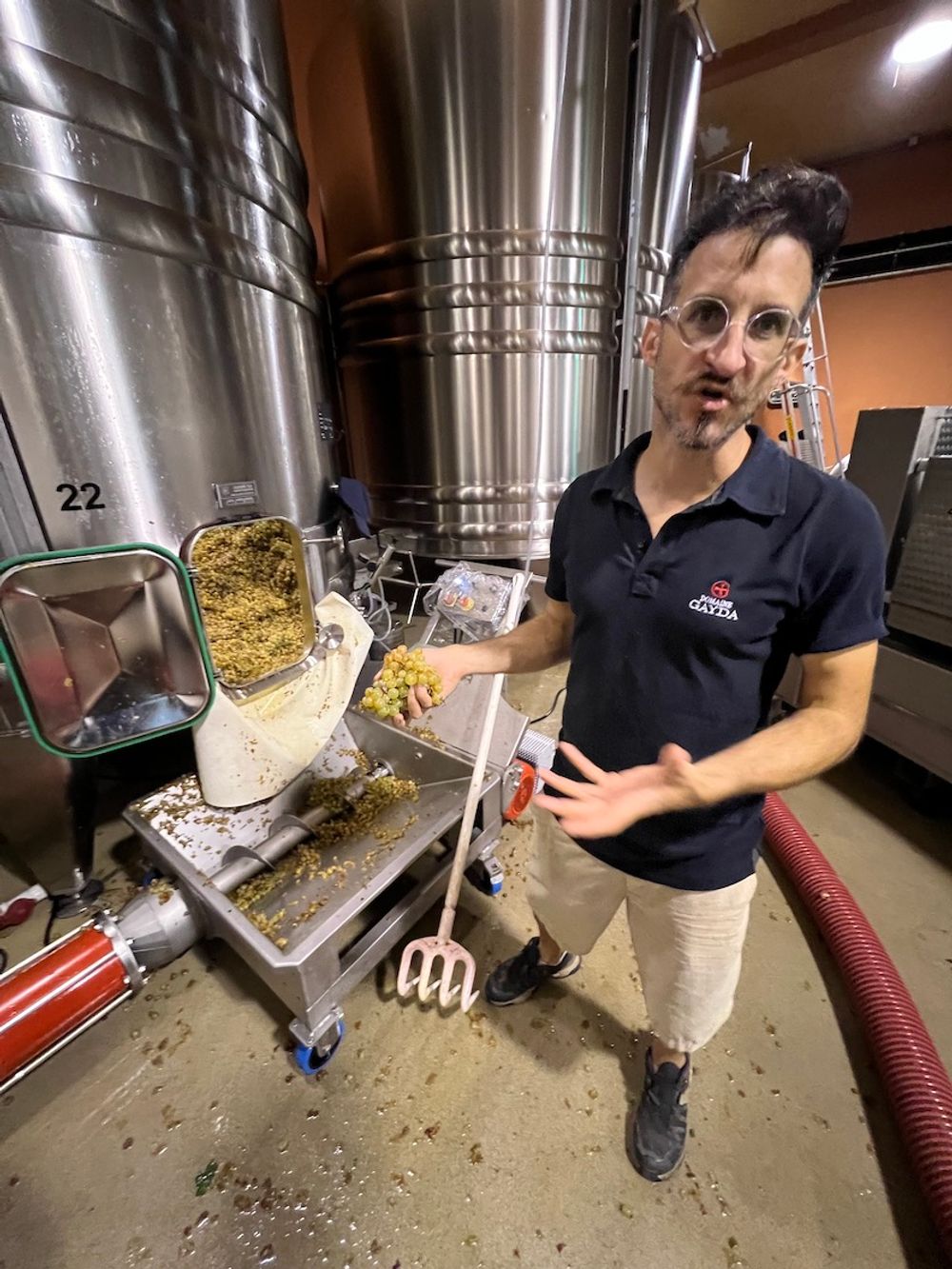
Always pushing the envelope: carbonic-macerated Macabeu for a possible new wine
Testing the fermenting samples at the winery
When I meet Chansault a week later at Domaine Gayda to taste the tank samples his work has already involved trying to create space to receive more fruit by shifting wines from tank to barrel; and he’s checking in on the progress of a new wine he’s thinking of making – a carbonic-macerated Macabeu in the Altre Cami range which was so successfully launched this year.
“Taste these,” he enthuses handing me grapes which have already started to fizz.
Experimentation in the winery is a luxury afforded Chansault and well it might. His inquisitive mind and passion have seen him take the Gayda wines in a number of fascinating directions with cuvées whose blends change vintage by vintage to a range of different vinification tanks that allow him to be creative in the blending process. A masterclass held in London three years ago showing the effect of different tank materials on the same plot of Syrah was a real eye-opener.
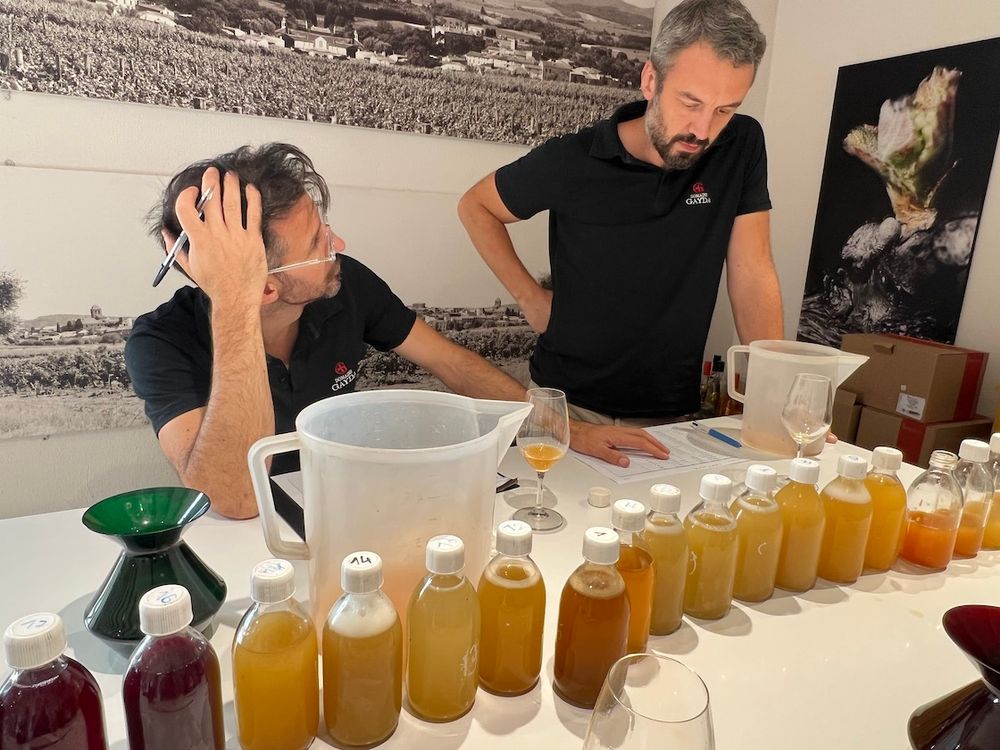
Weekly tank sample test: Chansault and winery manager Damien Roucayrol
Each week Chansault meets up with Damien Roucayrol, his winery manager to taste through all the tank samples, in this case 36 of them. They analyse how the Syrah in egg is fermenting compared to that in barrel and tank and so on. During this hour-long process Chansault is on the phone to one of his picking team managers. Only eight of the 10 pickers have bothered to show up and of those eight, three are picking too slowly, meaning that Chansault knows that plot won’t be finished by stumps.
An indication of the amount of plates he has to spin was that after I left him a week earlier at the vineyards – the day when he started at 4am – he was then off for a meeting with the local cooperative about some of the wine they have in tank for him, before driving 70 km home.
Despite all of the challenges Chansault confesses to being happy with the 2022 vintage so far, the learning from this week’s tank sample tasting being that perhaps one plot could have been picked a week earlier, while the rest of the samples are all progressing well. Certainly from the evidence from a day on the road and in the winery, the quality of 2022 is clearly there.

One that didn’t get away: hunting is big news in the Languedoc
The winemakers’ bête noir
And, of course, these are just some of the challenges in the working day of a winery’s technical director at harvest time. No piece about this would be complete without mention of one more challenge that every winemaker has to face in the Languedoc and Roussillon – the sangliers, or wild boar.
Boars are a menace here all right. During our day visiting vineyards, we see plenty of evidence of where these destructive creatures have eaten grapes and the electric fences erected to deter them. Chansault’s solution to the problem is to ‘lay on’ table grapes for the boar so they won’t touch his wine grapes.
“I have made a pact with the wild boar,” Chansault says defiantly, arms akimbo, “I lay on table grapes for them so they do not eat the wine grapes.”
Sure enough, at the end of each row of this Syrah plot there is a white or black Muscat vine planted, with many of the bunches eaten away, the Syrah, which ripens after the Muscat, remains untouched. “The boar is very good,” he says pointing to his nose “at knowing exactly where these grapes are, by the time they have finished eating the table grapes we will have finished the vendage.”
Chansault then proceeds to tell me a story about South African winemaker Ken Forrester and the last time he visited the region. After a day in the vines, at a local bar, Forrester beat the locals arm-wrestling and so, in a show of respect, the French gave him a whole wild boar they had shot during a recent hunt. In return, Ken collected herbs and vegetables growing wild around the vineyards and cooked the beast in this cornucopia.
“Ken couldn’t believe it – he said ‘I came into that bar with 10 bucks, had 10 beers, got pissed and came out with a whole boar – I love the Languedoc!’”

Job well done: Chansault with some of the tank samples of fruit picked on our harvest visit
Domaine Gayda is a supplier partner of The Buyer. To discover more about them click here.
